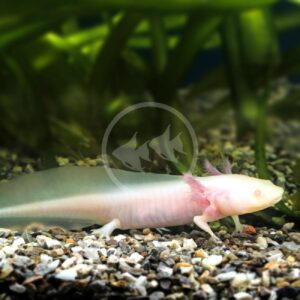
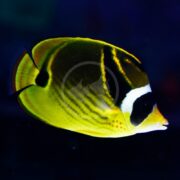
CATFISH – REDTAIL AMAZON
Phractocephalus hemioliopterus
$34.99 – $139.99Price range: $34.99 through $139.99
The Amazonian Redtail Catfish, or simply Redtail Cat for short, is found widely throughout the Amazon and Rio Orinoco basins that expand across many countries in South America. Often sold as mere “kittens” at approximately 4″ or less, this catfish species is truly a river monster that is best left admired in the wild, public aquaria or to the few extremely dedicated aquarists that have the facilities to house an adult Redtail cat. On average, an adult Redtail cat in captivity can grow to 3 or 4 feet in length, weighing between 80 and 100 pounds. In the wild, these catfish have been observed at a minimum of 5 feet in length, and can weigh approximately 180+ pounds. Juvenile Redtail catfish grow up quicker than you think, especially when their diets are being supplemented correctly, making this fish a serious commitment in all aspects of aquatic husbandry (please see ‘Diet and Care Requirements’ below). For its enormous adult size however, the Redtail cat is a relatively non-aggressive fish so long as it is not kept with tank mates that can become a meal. We do not recommend keeping any other type of catfish with a Redtail cat because this will likely result in a territorial dispute. Diagnosable differences between male and female Redtail cats are unknown. Note: Populations of Redtail cats have been found within rivers and ponds of the United States likely as a result from irresponsible hobbyists releasing specimens that got too large to care for. While these catfish will not survive in colder regions such as Wisconsin, those in warmer regions could and this is unhealthy for the biodiversity of our native ecosystems. We urge hobbyists to not do this, and to please reach out to our store, Aquatics Unlimited, to either surrender your catfish to us or for resources to help you with your catfish.
Care Level: Advanced
Temperament: Semi-Aggressive
Live Plant Safe: No
General Description: The Amazonian Redtail Catfish, or simply Redtail Cat for short, is found widely throughout the Amazon and Rio Orinoco basins that expand across many countries in South America. Often sold as mere “kittens” at approximately 4″ or less, this catfish species is truly a river monster that is best left admired in the wild, public aquaria or to the few extremely dedicated aquarists that have the facilities to house an adult Redtail cat. On average, an adult Redtail cat in captivity can grow to 3 or 4 feet in length, weighing between 80 and 100 pounds. In the wild, these catfish have been observed at a minimum of 5 feet in length, and can weigh approximately 180+ pounds. Juvenile Redtail catfish grow up quicker than you think, especially when their diets are being supplemented correctly, making this fish a serious commitment in all aspects of aquatic husbandry (please see ‘Diet and Care Requirements’ below). For its enormous adult size however, the Redtail cat is a relatively non-aggressive fish so long as it is not kept with tank mates that can become a meal. We do not recommend keeping any other type of catfish with a Redtail cat because this will likely result in a territorial dispute. Diagnosable differences between male and female Redtail cats are unknown. Note: Populations of Redtail cats have been found within rivers and ponds of the United States likely as a result from irresponsible hobbyists releasing specimens that got too large to care for. While these catfish will not survive in colder regions such as Wisconsin, those in warmer regions could and this is unhealthy for the biodiversity of our native ecosystems. We urge hobbyists to not do this, and to please reach out to our store, Aquatics Unlimited, to either surrender your catfish to us or for resources to help you with your catfish.
Diet Requirements: Redtail cats are opportunistic in nature consuming fish, crustaceans, insects, and fallen fruits. One of the unfussiest eaters, it typically desires more of a protein-rich diet in captivity. Such options include frozen brine shrimp, mussels, krill, silverside fish, and prawns. Foods containing Spirulina algae are a plus. Appropriate frozen food options will vary depending on the size of your specimen. Adult Redtail cats can also be fed pieces, or whole, white fish fillets from the grocery store. Redtail cats may accept large sinking pellet foods, but these should not make up the majority of their diet. Live earthworms are a favorite treat. Variety is the spice of life in order to maintain color, immune function and longevity of your fish. This is extremely important for a Redtail cat because an individual with no variety will become picky and refuse options of other food in the future. We discourage feeding live fish to Redtail cats because they are often of little nutritional value and increase the risk of introducing disease. Redtail cats are notorious for becoming greedy and will often learn to “beg” for food, but feeding only once a day should be exercised for juveniles. Adult specimens may only need to be fed once a week. Obesity is a big problem in large catfish species, which will only be a detriment to their health in the long run. Do not feed any form of mammalian/poultry meat (e.g., beef or chicken) as certain lipids in these cannot be metabolized by the Redtail catfish.
Care Requirements: A minimum 90 gallon aquarium is needed at the very least for a small Redtail catfish. A more subadult specimen will require a 250+ gallon aquarium. The realistic long term accommodations for a juvenile Redtail cat to mature into an adult Redtail cat of 3 or 4 feet in length requires a phenomenal volume of water of at least a couple thousand gallons – which still barely allows for natural movement as it would freely in the wild. This catfish cannot be put into a biologically immature aquarium. Weekly water changes are necessary to keep water parameters pristine (Nitrates < 15 ppm) as Redtail cats do not like high nitrates and deteriorating water parameters. Equipping the aquarium with several canister filters, or a sump system, is also needed to maintain a healthier environment for this species and combat the amount of waste it produces. A Redtail cat will be relatively indifferent to decor, especially as an adult, but some stacked rocks to create caves for younger specimens to hide, or driftwood, may add some pizzazz to the aquarium. A lot of unobstructed and open swimming space should be of priority, and the aquarium needs to be well oxygenated. A sandy or fine substrate is needed, because gravels can be ingested by more mature specimens and get caught in their delicate gill tissue. Redtail cats are compatible with a wide variety of fish; tank mates should not be aggressive as to nip at the Redtail cat’s delicate and sensitive whiskers, or too small to be consumed. Redtail catfish are solitary, so no more than one should be considered per aquarium. Recommended water conditions, 72-78° F, KH 2-12, pH 6.0-7.5.
Purchase Size: Small: 2” to 2-1/2”
Note: Your item may not look identical to the image provided due to variation within species. Purchase sizes are approximate.
Dry goods orders are shipped via US Postal Service or UPS to the address provided at checkout based on the selection made in your website shopping cart. Product is carefully packed to help prevent any damage during shipping. Once processed you will receive a shipment notification via email with tracking number, and delivery notification. Please allow 48 hours for processing after your order is placed.
Perishable items (i.e. live plants, refrigerated/frozen foods) are shipped via US Postal Service 2-3 day to the address provided at checkout for a $25.00 flat rate charge. Items are packed with secure packing material and heat, cold, or Cryo packs as needed to maintain safe temperatures during transit. If one or more perishable items are in the shopping cart at checkout the $25.00 perishable shipping charge will automatically appear and need to be selected. Once processed you will receive a shipment notification via email with tracking number. Please allow 48 hours for processing after your order is placed.
Livestock (i.e. fish, invertebrates, coral) are shipped via UPS Overnight to the address provided at checkout for a $55.00 flat rate charge. Livestock is packed in insulated styrofoam boxes with secure packing material and heat, cold, or Cryo packs as needed to maintain safe temperatures during transit. If one or more livestock items are in the shopping cart at checkout the $55.00 livestock shipping charge will automatically appear and need to be selected. Livestock is shipped Monday through Wednesday ONLY (no weekend delivery is available) weather permitting, and we reserve the right to delay shipping until conditions are appropriate for safe arrival. Once your order is placed we will contact you to arrange the best shipping date based on these criteria. Someone must be available to receive the livestock order on the first delivery attempt. Once processed you will receive a shipment notification via email with tracking number. Please allow 48 hours for processing after your order is placed.
For mixed dry goods/perishable & livestock orders items will be shipped via their corresponding shipping methods outlined above. Dry goods will be shipped via US Postal Service or UPS based on your selection and checkout, while livestock will ship via UPS Overnight for a $55.00 flat rate charge. You will receive separate notifications and tracking numbers for the dry goods and livestock. Please note due to different carriers and shipping methods dry goods and livestock may arrive on different days.
Related products
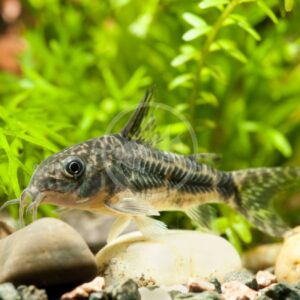
CATFISH – CORYDORAS PEPPERED
Corydoras paleatus
$6.99 – $9.99Price range: $6.99 through $9.99
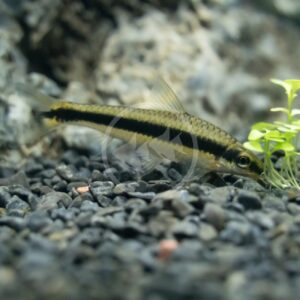
ALGAE EATER – SIAMESE / SAE
Crossocheilus oblongus
$7.99 – $24.99Price range: $7.99 through $24.99
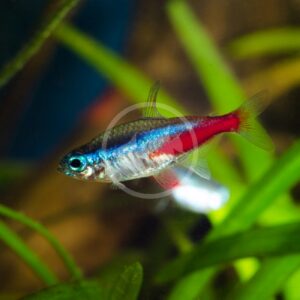
TETRA – NEON
Paracheirodon innesi
$6.99
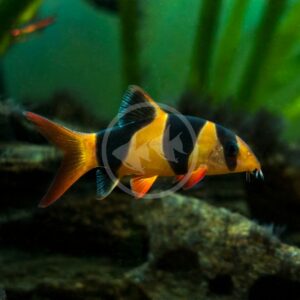
LOACH – CLOWN
Chromobotia macracanthus
$16.99 – $199.99Price range: $16.99 through $199.99
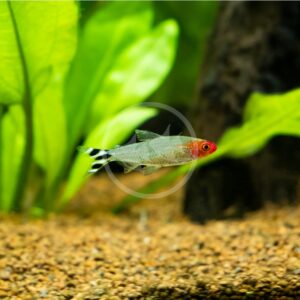
TETRA – RUMMYNOSE
Hemigrammus rhodostomuss
$9.99
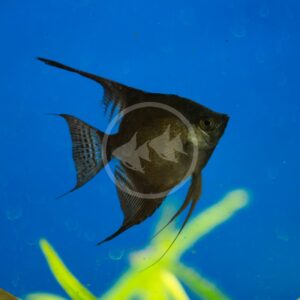
ANGELFISH – FW BLACK
Pterophyllum scalare
$6.99 – $49.99Price range: $6.99 through $49.99
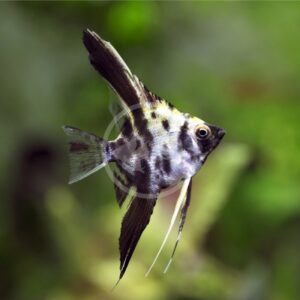

ANGELFISH – FW MARBLE
Pterophyllum scalare
$6.99 – $99.99Price range: $6.99 through $99.99
